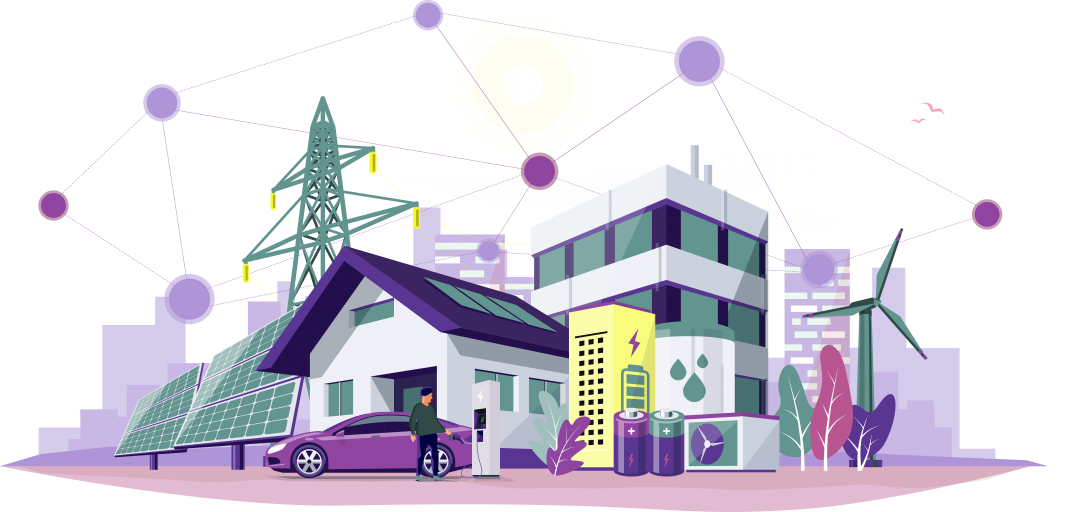Tietoevry, a leading technology company with a strong Nordic heritage and global capabilities, spearheads the implementation of innovative solutions for a sustainable energy transition
From the climate perspective, energy needs to be totally rethought. We need efficient means to manage generation and, most importantly, consumption. This is where new technologies enter the scene – minimising the environmental impact of energy usage means large-scale deployment of digital solutions and artificial intelligence.
In recent years, Europe has been leading in driving a profound shift towards sustainability and a greener future. In the past two years, this “green transition” has seen significant initiatives emerge in managing energy through digitalisation.
A sustainable energy transition needs collaboration between business and research
Energy ECS (Electronics, Components, Systems), a comprehensive three-year EU project with an overall budget of €33 million, accelerates Europe’s decarbonisation goals for 2050 through innovation and lays the foundation for an emerging European business and technology ecosystem.
The project brings together 14 small and mid-sized enterprises, eight large enterprises, and six research and technology organisations from Finland, Austria, Germany, Ireland, Iceland, Italy, Sweden, and Switzerland. Co-financed through the ECSEL Joint Undertaking of the EU Horizon 2020 programme, national funding agencies, and consortium partners, this project aims to develop and integrate technology platforms effectively, culminating in field-testable solutions.
Sustainability for profitability
The Nordic countries are European leaders in creating efficient and sustainable energy solutions. Being one of the key IT players in the Nordics, with global reach, Tietoevry Finland has the coordinator role in the international initiative. Tietoevry has played a practical role in advancements observed in Europe and globally. The solutions contribute to the transformative journey towards a sustainable and decarbonised society, from virtual power plants to using data to help decarbonise an entire city.
Key contributors to a greener future
Building a zero-carbon society largely depends on the availability of digital tools and services that the energy industry and stakeholders require to succeed in their business efforts.
Network Information Systems help plan, construct, and maintain distribution networks. Fully digitalised processes enable efficient operation and decision-making.
Energy Data Management helps harness the data energy systems can generate. Understanding what happens where and how it can be affected is vital to creating new services and solutions. Process Automation reaches beyond human capabilities to run processes for maximum efficiency.
Distributed Energy Solutions allow distributors and retailers to manage and control grid-connected devices automatically, freeing staff to focus on things that matter. Retailers can automate the management of the whole value chain from energy production to consumption – as can building owners, automation or heating system providers, electric vehicle charging providers, teleoperators, and public bodies like city or district administrations.
Ecosystems and partnerships are the new way of thinking about the market composition. Collaboration is more efficient in reaching common targets than competition.
Digitalisation, naturally, is the underlying success factor that makes all the above innovations possible.
Distributed energy resources are the future
In the sustainable energy transition, we are moving towards large-scale renewable production, and as a result, an even more decentralised production infrastructure is being formed. At the same time, the number of assets using energy increases, and they become smarter.
The increasingly weather-dependent, hence more unpredictable, power generation needs to be balanced with energy storage and flexible energy use. All this requires integration and data-driven control.
Tietoevry solutions and knowhow made available as a foundation to build novel solutions in the context of the ECS project – cover the entire value chain:
- Network planning and maintenance.
- Installation and maintenance of meter infrastructure.
- Collection of metering data.
- Balance management.
- Customer information and billing.
- Managing distributed energy resources.
- Creating virtual power plants.
- Participating in flexibility markets.
A case in point in Energy ECS: Microgrids
A microgrid is a self-sufficient energy system. It serves a discrete geographic footprint, such as an industrial park, hospital complex, business centre or neighbourhood. The microgrid generates power close to those it serves; the generators are near or within the premises. It can disconnect from the central grid and operate independently. A microgrid typically remains connected to the central grid in a normal situation. It is intelligent and tries to achieve the lowest prices, cleanest energy, and greatest electric reliability by managing available resources.
Microgrids are seen as one solution to respond to energy system bottlenecks and aim to improve grid stability.
Within the Energy ECS program, we are building a Microgrid Fleet Management system capable of monitoring and controlling a set of microgrids across the regions. Energy production and storage technologies cause challenges for grid energy management and interoperability between grids. Therefore, we see significant potential for new software and AI/ML algorithms to manage microgrids.
A feasible microgrid location is an area in the network that could be self-sufficient for a fixed period. Finding such areas in a vast network requires combining and analysing various data about the network. This involves using a large amount of historical data provided by individual devices in an energy system in combination with data from network information systems and other systems to produce proper network estimations and simulations.
Due to the sheer scale of the network, it is very time-consuming to perform a manual analysis for optimal locations for microgrids. Therefore, it is vital to apply an automated system that could analyse such datasets, then use certain Artificial Intelligence (AI) and Machine Learning (ML) algorithms, and finally, programmatically recognise feasible microgrid locations.
We are building data-driven tools and algorithms for finding optimal microgrid locations in energy distribution networks and have experimented with partners in the Energy ECS programme.
The results of Energy ECS will be implemented into the product portfolio of Tietoevry and other partners in the collaboration. This project has received funding from the European Union’s HORIZON 2020 ECSEL JU programme under the Grant Agreement no. 101007247.

This work is licensed under Creative Commons Attribution-NonCommercial-NoDerivatives 4.0 International.


